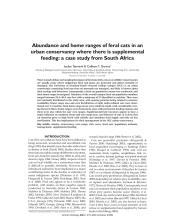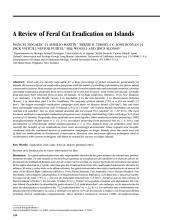Eradicating Pacific rats (Rattus exulans) from Nu'utele and Nu'ulua Islands, Samoa - some of the challenges of operating in the tropcial Pacific

BRB
Available Online
Butler, D.J.
,
Tipamaa, F.T.
,
Tye, A.
,
Wylie, M.
2011
The restoration of the small offshore islands of Nuutele (108ha) and Nuulua (25ha) has long been identified as a priority for biodiversity conservation in Samoa. The first step towards restoration was the aerial spreading of brodifacoum to eradicate Pacific rats (Rattus exulans) in August 2009. Procedures for the eradication followed those used in New Zealand and involved technical experts from that country. Particular challenges included a tight operational time-frame (two months), technical problems magnified by the remote location, variable reliability of weather forecasting,working with the local community, and mitigating rodenticide exposure risks for the friendly ground-dove (Gallicolumba stairi) (IUCN: vulnerable). Solutions to these challenges are discussed as guidance for similar projects in remote island locations. Follow-up monitoring between August 2009 and March 2010 indicated that the eradication had been successful, but Pacific rats were detected on Nuutele in May 2011. Nuulua has yet to be rechecked in 2011. DNA analyses are being organised to determine if these rats are survivors or re-invaders.


